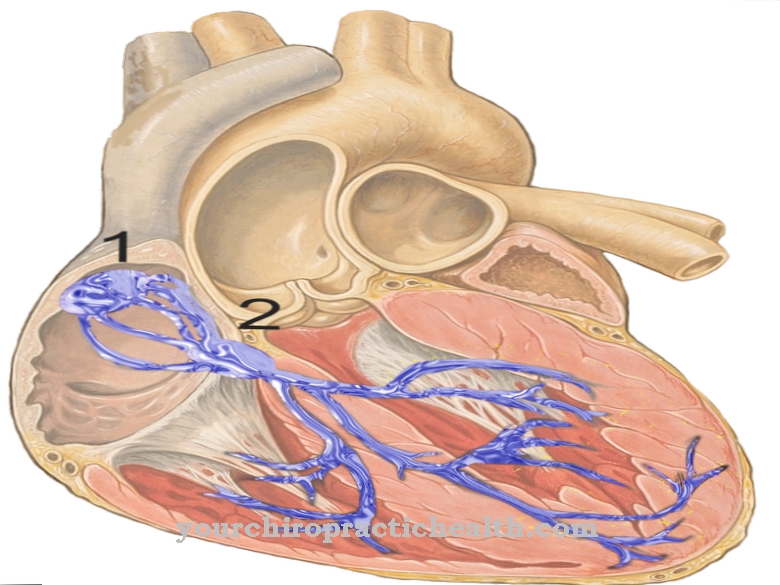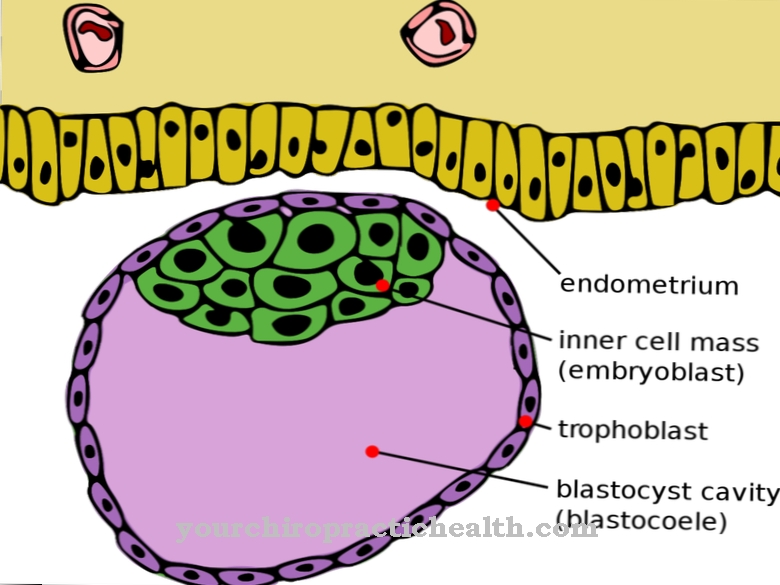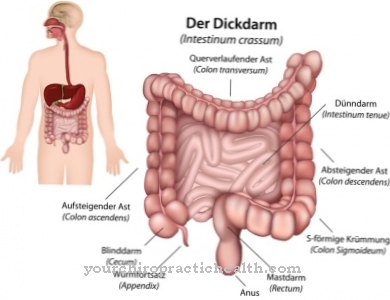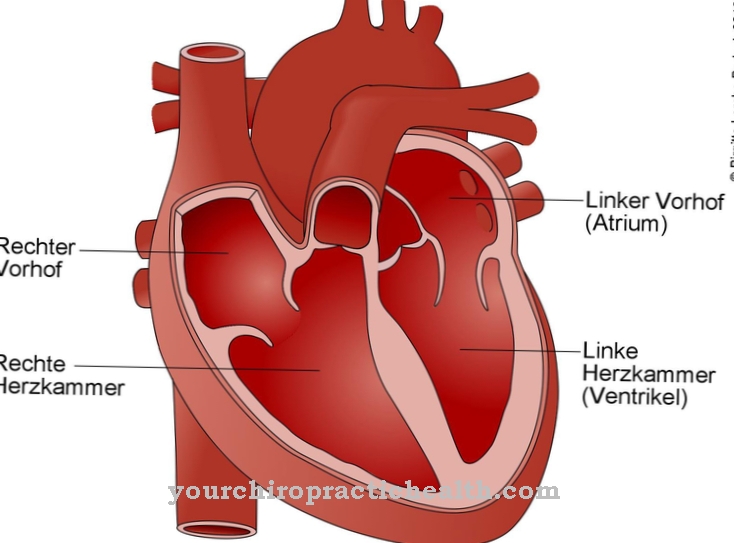Under the Vertebral artery is understood to be a branch of the collarbone artery. She is also called Vertebral artery known.
What is the vertebral artery?
The vertebral artery is a branch of the subclavian artery (clavicle artery). The blood vessel is also called vertebral artery or Vertebral artery and reaches a diameter between 3 and 5 millimeters.
Like most other arteries in the human body, the vertebral artery is paired. One artery occurs on the right and the other on the left side of the body. The name arteria vertebralis is due to the fact that the blood vessel arises from the arm artery and directs the blood towards the cerebellum. The artery runs through part of the cervical vertebrae. The Latin term vertebra translates into German as “vortex”.
Overall, the human brain receives blood from a total of four arteries, including two vertebral arteries and two carotid arteries. If a vertebral artery closes, this usually does not have a negative effect on the brain, because the opposite artery then continues to provide blood circulation.
Anatomy & structure
The course of the vertebral artery is not infrequently asymmetrical. About half of people have a dominant vertebral artery on the left side of their body. In around 25 percent, the blood vessel occupies a dominant position on the right side of the body. The remaining 25 percent are similar in size in both vertebral arteries.
The vertebral artery begins in the thoracic cavity at the first thoracic vertebra. From there it runs between the musculus longus colli and the musculus scalenus anterior in the direction of the 6th cervical vertebra and reaches the skull through an opening in the foramen transversarium (lateral process of the cervical vertebrae). The foramina transversaria, which form a kind of chain, are also known as the transverse process canal. At this point, the vertebral nerve accompanies the vertebral artery. In addition, the vertebral artery runs parallel to the carotid artery.
In the 1st cervical vertebra (atlas), the vertebral artery swings in the direction of the posterior segment of the vertebral arch. The blood vessel is covered by the semispinalis capitis muscle. The vertebral artery enters the skull through the foramen magnum. This section is called the pars intracranialis.
Inside the skull, the dura mater (hard meninges) is traversed by the vertebral artery. It runs medially into the anterior section of the medulla oblongata (elongated medulla). At the lower half of the pons (bridge), the right and left vertebral arteries are united to form the basilar artery. This in turn joins the Circulus arteriosus cerebri.
Function & tasks
One of the most important functions of the vertebral artery is the supply of blood to the brain. It divides into different branches. One of these branches arises before joining with the basilar artery. It is used to supply various sections of the cerebellum and the brain stem (Truncus cerebri or Truncus encephali) and is known as the inferior posterior cerebellar artery. The arteria spinalis anterior (anterior spinal artery) also has its origin in the vertebral arteries. However, the inflows are not very constant, so that individual large fluctuations take place.
Further branches of the vertebral artery form the posterior spinal artery, which supplies the spinal cord, and the meningeal rami, which are responsible for supplying the dura mater. The extended marrow is one of the supply areas of the vertebral artery.
Diseases
The vertebral artery can sometimes be affected by disorders and diseases. This primarily includes the vertebral artery syndrome. This is a complex of central nervous symptoms that arises from a circulatory disorder in the vertebral artery.
Doctors differentiate between two different forms of vertebral artery syndrome. These are the vascular vertebral artery syndrome and the vertebral artery compression syndrome. The vascular form results in vascular stenosis (narrowing) due to arteriosclerosis (hardening of the arteries). The compression syndrome is associated with vascular compression. Possible causes are tumors, metastases from cancer, a herniated disc or degenerative changes in the region of the cervical spine.
In the context of the vertebral artery syndrome, a complex of symptoms appears that is based on a reduced blood supply to the basilar segment. The most significant symptom is dizziness that sets in like a fit. If the patient suffers from compression-related vertebral artery syndrome, the dizziness is often caused by rapid turning head movements. Unclear neurological side effects are also possible. As a result, the vertebral artery syndrome cannot be clearly diagnosed. These complaints can include headaches in the back of the head, neck pain, tinnitus (ringing in the ears), visual disturbances, nausea, vomiting, sensory disorders and disorders of movement coordination. Sometimes there is a risk that the person affected may fall to the ground in a fit.
To diagnose vertebral artery syndrome, the doctor will do a physical exam, check the patient's neurological status, and check the functions of the head joints. In order to be able to determine the causes of the complaints, the doctor carries out imaging procedures such as magnetic resonance imaging (MRI) of the cervical spine, duplex sonography or digital subtraction angiography.
The way in which vertebral artery syndrome is treated depends on the underlying cause. In the case of a vascular vertebral artery syndrome, in which there is a pronounced narrowing of the vertebral artery, a stent is usually implanted. In the case of vertebral artery compression syndrome, both conservative and surgical treatment is possible. Conservative therapy consists of chiropractic therapy, physiotherapy exercises and the elimination of pain. If there is a herniated disc or a tumor, surgery must take place.
















.jpg)
.jpg)



.jpg)






